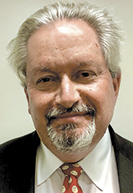Subscriber Benefit
As a subscriber you can listen to articles at work, in the car, or while you work out. Subscribe NowIn just 30 pages, the Indiana Supreme Court “redrew (Indiana’s) premises liability landscape,” an appellate court judge recently noted. The October 2016 rulings in Rogers v. Martin, 63 N.E.3d. 316, and Goodwin v. Yeakle’s Sports Bar & Grills, Inc., 62 N.E.3d 384, redefined the parameters courts — not juries — must use when determining whether the harm alleged in a negligence case was was foreseeable, giving rise to a duty.
The test laid out in Goodwin and Rogers calls for courts to decide, as a matter of law, whether the injury was foreseeable by analyzing the broad type of plaintiff and broad type of harm, a framework that marked a significant departure from the fact-sensitive inquires previously used. Though attorneys credit those companion rulings with providing clarity in a murky area of law, they also say the broader test created new questions that gave rise to a flurry of premises liability litigation.
Goodwin and Rogers have been cited as the controlling precedent in numerous state and federal court opinions in recent months, touching on issues such as hotel rape, campus sexual assault and restaurant shootings, among others. As courts continue to grapple with the application of the new foreseeability test, attorneys say the shift from a fact-based to a broader inquiry has necessitated new litigation strategies in the premises liability realm.
Evolution of the test
Both Goodwin and Rogers recognize the uncertainty that surrounded how duty should be determined in the context of a negligence claim, with now-retired Justice Robert Rucker walking through the various approaches in Goodwin.
 Olds
OldsRucker’s analysis starts with Webb v. Jarvis, which created a three-part balancing test for determining whether a doctor owed a duty to a third party injured by the doctor’s patient. But a trilogy of subsequent 1992 cases — L.W. v. W. Golf Ass’n., Vernon v. Kroger Co. and Delta Tau Delta v. Johnson — employed a totality of the circumstances test to determine if a landowner owes a duty to protect an invitee from foreseeable third-party criminal attacks.
Rucker then pointed to the 2003 case Paragon Family Restaurant v. Bartolini, where the Supreme Court held that “there is no doubt … that reasonable foreseeability is an element of a landowner or business proprietor’s duty of reasonable care.” The only question that remained was “at what point and in what manner to evaluate the evidence regarding foreseeability.” When deciding Kroger Co. v. Plonski in 2010, the court found the answer to that question in the totality of the circumstances test developed in the 1992 cases.
The totality of the circumstances test continued to be used in premises liability litigation until Goodwin and Rogers were decided, said Lafayette attorney James Olds. That meant that while defendants would try to resolve the question of duty on summary judgment, plaintiffs would urge the courts to send their cases to juries.
 Dollens
Dollens“… Plaintiffs have urged trial courts to determine whether an act is foreseeable by conducting a very fact-intensive inquiry of the given situation, which rarely makes summary judgment appropriate,” Lucy Dollens, who argued as amicus on behalf of the Defense Trial Counsel of Indiana in Goodwin¸ wrote in an email to Indiana Lawyer.
A new framework
Now, under the 2016 broad-type test, more defendants are pursuing summary judgment on the issue of whether a duty exists, and more courts are making summary judgment rulings on those issues, Olds said.
In Goodwin, the issue was whether a bar had a duty to protect a patron from a sudden shooting predicated by an allegedly derogatory remark about the shooter’s wife. The Supreme Court affirmed the grant of summary judgment in the bar’s favor after finding that, generally, a shooting in a neighborhood bar is not foreseeable as a matter of law.
Chief Justice Loretta Rush’s opinion in Rogers analyzed two questions of duty: whether a homeowner had a duty to protect a party guest from a fistfight with the party’s co-host, and whether the homeowner had a duty to protect the guest from the exacerbation of injuries sustained in the fight. Though the court found a fight at a house party is not foreseeable as a matter of law, the exacerbation of injuries caused by the fight is foreseeable. Thus, because the homeowner failed to take steps to help the guest when she found him motionless in her basement, the court ruled summary judgment was inappropriate because there were questions of fact as to whether the homeowner acted negligently.
 Paul
PaulThe main takeaway from Goodwin and Rogers is that the analysis of foreseeability in the context of duty differs from the analysis in the context of proximate cause, Faegre Baker Daniels litigator Brian Paul said. A proximate cause analysis takes a granular look at the facts and circumstances surrounding a case, while the departure from the totality of circumstances test shows a duty analysis is broader, Paul said.
However, personal injury attorney Rich Cook said the Rogers decision, in particular, underscores the fact that duty can evolve if the broad type of plaintiff and/or harm changes, a premise he has argued for in subsequent duty litigation.
Widespread application
 Cook
CookThe ambiguous nature of the definition of the broad type of plaintiff and harm is likely one of the reasons cases related to Goodwin and Rogers are being litigated so frequently, Paul said — courts and attorneys are trying to discern the parameters for forming those definitions. According to Cook, the Indiana Court of Appeals’ decision in March in Amber Hamilton v. Steak ’n Shake Operations, Inc., 49A02-1704-CT-776, shows that the broad test does not require courts to throw out every specific fact when analyzing duty, but rather requires them to use the facts in a way that appropriately defines the broad type of plaintiff and harm.
Unlike in Goodwin, the court in Hamilton determined that Steak ’n Shake owed a duty to protect Amber Hamilton from an in-restaurant shooting because the staff of the restaurant had been aware of the escalating conflict for at least 30 minutes before the shooting took place. The broad type of plaintiff was a patron who was subjected to threats and taunts, while the broad type of harm was injury resulting from the culminating violence.
Similar logic was applied to the May 29 decision in Jeffery Certa v. Steak ’n Shake Operations, Inc., et al., 79A05-1708-CT-1873. There, the Court of Appeals ruled that because Steak ’n Shake employees witnessed and were informed of tensions between patrons, an injury to a patron resulting from those tensions was foreseeable.
Olds, who was lead counsel for Jeffrey Certa, said the decision in his case shows that actual knowledge can and should be considered in a duty foreseeability analysis. The Indiana Surpeme Court has since denied transfer to the Hamilton case — where Cook was lead counsel for Hamilton — making the actual knowledge ruling standing precedent and highlighting Cook’s point that duty can change based on the circumstances.
Unanswered questions
 Hawkins
HawkinsCohen and Malad partner Gabe Hawkins argued as amicus for the Indiana Trial Lawyers Association in both Steak ’n Shake cases. He said it’s possible the Goodwin and Rogers caselaw could eviscerate 40 to 60 percent of duties owed by proprietors, leaving it up to plaintiffs to find an exception that would prove the harm was foreseeable.
To that end, Hawkins speculated the flurry of activity surrounding foreseeability in the context of duty can be attributed to plaintiffs trying to find those exceptions and litigate them into precedent. If plaintiffs are not successful, he said he is concerned more harm could befall patrons because of the abrogated duties.
On the other side of that coin, Olds said defendants are also contributing to the uptick in this area of law because the Goodwin and Rogers decisions create more opportunities for summary judgment rulings in their favor. Paul, however, cautioned that there will be no quick answers when it comes to the questions raised by the broad Goodwin and Rogers test.
“The factual permutations that can arise that may or may not give rise to a duty are endless,” Paul said. “The courts are going to be wrestling with how these decisions should be applied in many, many factual scenarios for a long time.”•
Please enable JavaScript to view this content.
